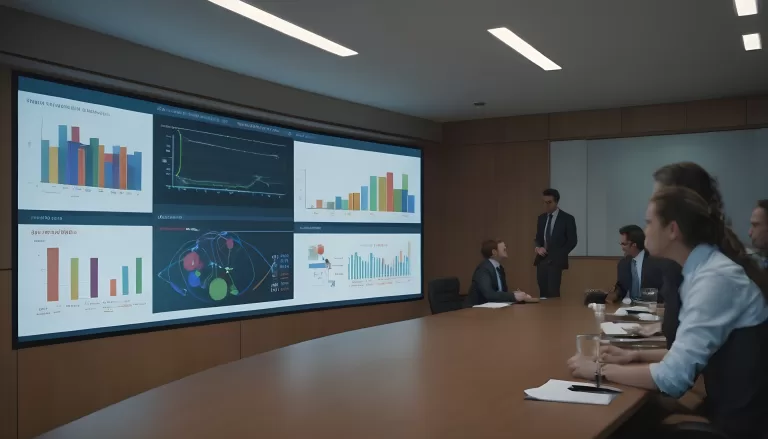
Customer centricity is a strategic approach that places customers at the core of the product development process. It means understanding and satisfying the ever-evolving preferences of consumers by gathering real-time insights and feedback from them. Customer centricity enables product teams to build products that align more closely with market demands, leading to increased customer satisfaction and brand loyalty.
What is Video Banking and Why is it Important?
Video banking is a service that allows customers to interact with their bank representatives via video calls. It can be used for various purposes, such as opening accounts, applying for loans, resolving issues, or getting financial advice. Video banking offers several benefits for both customers and banks, such as:
- Convenience: Customers can access banking services from anywhere and anytime, without having to visit a branch or wait in line.
- Personalization: Customers can have a face-to-face conversation with their bank representatives, who can tailor their services and recommendations to their specific needs and preferences.
- Trust: Customers can see who they are talking to and verify their identity, which can increase their confidence and trust in their bank.
- Engagement: Customers can have a more engaging and interactive experience with their bank, which can improve their satisfaction and loyalty.
How to Adopt a Customer-Centric Approach to Video Banking
To successfully implement video banking, banks need to adopt a customer-centric approach to product development. This involves using digital tools and platforms to connect teams, systems, and processes to enable more efficient and customer-centric product development. Some of the steps that banks can take are:
- Collect real-time data from various sources, such as social media, customer feedback, and sales data, to understand the needs, preferences, and expectations of their customers regarding video banking.
- Map and optimize the customer journey for video banking, identifying the pain points, opportunities, and touchpoints that can enhance the customer experience.
- Test the video banking solution with real customers, using methods such as prototyping, user testing, and beta testing, to gather feedback and validate assumptions.
- Be proactive in communicating with customers, informing them about the benefits and features of video banking, addressing their concerns and questions, and soliciting their suggestions for improvement.
- Measure the success of video banking using metrics such as churn rate, net promoter score (NPS), customer feedback surveys, and time to value.
Examples of Banks that Successfully Adopted Video Banking
Several banks around the world have successfully adopted video banking as part of their customer-centric product development strategy. Some examples are:
DBS Bank:
- DBS Bank, based in Singapore, has been a pioneer in digital banking innovations. They introduced the “POSB Video Teller” service, allowing customers to connect with bank representatives via video call for various banking needs such as account opening, loan applications, and more. This service has significantly improved customer convenience and reduced waiting times in branches.
Citi Bank:
- Citi Bank has implemented video banking to provide personalized assistance to its clients. Through the Citi Video Connect platform, customers can connect with banking experts via secure video calls for advisory services, investment consultations, and other financial needs. This has helped Citi Bank strengthen customer relationships and offer more tailored solutions.
Standard Chartered Bank:
- Standard Chartered has embraced video banking to offer remote advisory services to its clients. With the “SC Mobile App,” customers can schedule video appointments with relationship managers to discuss investment strategies, wealth management, and other financial matters. This initiative has enabled the bank to cater to the evolving needs of its tech-savvy clientele.
HSBC:
- HSBC has integrated video banking into its customer service offerings to provide real-time assistance and support. Through the HSBC Video Call service, customers can connect with bank representatives for account inquiries, product demonstrations, and troubleshooting assistance. This has improved accessibility for customers, particularly those who prefer face-to-face interactions.
Wells Fargo:
- Wells Fargo has leveraged video banking to enhance accessibility and convenience for its customers. Through the “Wells Fargo Video Banking” service, clients can engage with bankers via video calls for mortgage consultations, loan applications, and financial advice. This initiative has streamlined the banking process and improved customer satisfaction.
Conclusion
Customer centricity is one of the keys to building successful products in the fast-paced and highly competitive F&B industry. By leveraging digital continuity, banks can adopt a customer-centric approach to product development that enables them to understand and satisfy the ever-evolving preferences of their customers regarding video banking. Video banking is a service that offers convenience, personalization, trust, and engagement for both customers and banks. Several banks around the world have successfully implemented video banking as part of their customer-centric product development strategy, achieving higher customer satisfaction and loyalty rates.
If you’re interested in learning more about video banking and how it can revolutionize the way you interact with your bank, we invite you to join us at our upcoming Video Banking Conference on the 8th of May. This conference will feature industry experts discussing the latest trends, innovations, and best practices in video banking.
To sign up for the conference and stay updated on agenda details and speaker announcements, please visit our conference page here.




